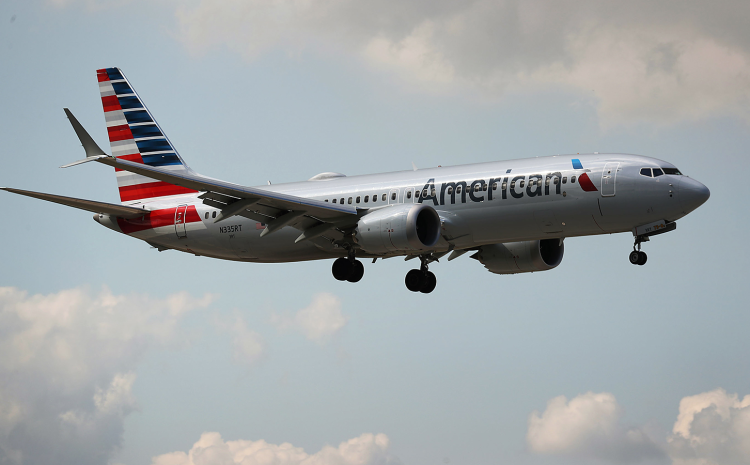How Fast Do 737s Fly? Explore the Cruise Speed of Boeing 737

As travelers, we often find ourselves marveling at the speed and efficiency of commercial airplanes, especially when boarding a Boeing 737, one of the most popular aircraft in the aviation industry. The ability of these modern jets to transport passengers across vast distances in relatively short timeframes is nothing short of remarkable.
In this article, we embark on a journey to uncover the speed at which 737 commercial planes fly, exploring the factors influencing their velocity and the engineering marvels that enable them to soar through the skies at impressive speeds.
The Need for Speed: How Fast Do 737s Fly?
The Boeing 737, a staple in commercial aviation, comes in various models with varying speed capabilities. On average, the cruising speed of a typical Boeing 737 ranges from approximately 485 to 530 miles per hour (780 to 850 kilometers per hour). This cruising speed allows these aircraft to efficiently cover vast distances, making them the preferred choice for short to medium-haul flights.
Factors Influencing Speed
- Aircraft Model: Different models of the Boeing 737 have distinct aerodynamic characteristics and engine capabilities, leading to slight variations in their cruising speeds;
- Altitude and Weather: The speed of commercial planes can be affected by altitude and weather conditions. Strong headwinds can slow down an aircraft, while tailwinds can enhance its speed;
- Flight Route: The length and type of flight route can impact the overall speed of the aircraft. Direct flights with fewer turns and deviations tend to be faster than flights with multiple stops or detours.
The Engineering Behind the Speed
The impressive speed of Boeing 737 commercial planes is a result of meticulous engineering and advanced technology. From aerodynamic design to powerful engines, several factors contribute to their remarkable performance.
Aerodynamic Design
The Boeing 737 boasts a sleek and aerodynamic design that minimizes drag and enhances its overall efficiency. The aircraft’s wings and fuselage are carefully crafted to reduce air resistance, allowing it to cut through the air with minimal effort.
High-Performance Engines
Equipped with powerful jet engines, the Boeing 737 generates the necessary thrust to propel the aircraft forward at high speeds. These engines are designed for fuel efficiency and performance, striking a balance between power and economy.
Fuel Efficiency and Economic Benefits
The speed of Boeing 737 commercial planes not only provides time efficiency for passengers but also contributes to fuel efficiency and economic benefits for airlines. The design of the aircraft’s wings and engines allows for optimal fuel consumption, making them cost-effective choices for airlines. The ability to cover distances quickly means that airlines can operate more flights in a day, maximizing their revenue and serving more passengers.
Safety Measures and Performance Standards
While speed is a crucial aspect of modern aviation, safety remains the top priority for airlines and aircraft manufacturers. The Boeing 737, like all commercial planes, undergoes rigorous testing and adheres to strict safety regulations to ensure the safety of passengers and crew. From regular maintenance to advanced safety systems, every measure is taken to guarantee a safe and reliable flying experience.
The Future of Speed in Aviation
As technology continues to advance, the future of aviation promises even faster and more efficient aircraft. Engineers and researchers are constantly exploring innovative ways to improve aerodynamics, propulsion systems, and materials, pushing the boundaries of speed and performance. Concepts such as supersonic and hypersonic travel are being explored, with the potential to revolutionize air travel and make long-haul flights even faster.
Supersonic Travel: Breaking the Sound Barrier
Supersonic travel, traveling faster than the speed of sound, is an area of active research and development in aviation. While supersonic commercial flights were previously operated, concerns over noise pollution and operating costs led to their discontinuation. However, companies and organizations are now exploring new technologies and designs that could lead to the revival of supersonic travel in a more sustainable and economically viable manner.
Hypersonic Travel: Reaching New Frontiers
Hypersonic travel takes speed to a whole new level, with the potential to travel at speeds several times faster than the speed of sound. This would significantly reduce travel times on long-haul routes and open up new possibilities for global connectivity. While still in the experimental phase, hypersonic travel holds great promise for the future of aviation.
The Passenger Experience
The ability of 737 commercial planes to fly at impressive speeds not only reduces travel time but also enhances the overall passenger experience. Faster flights mean less time spent in the air and more time at the destination, making air travel more convenient and appealing to travelers.
Time Efficiency
The speed of 737 commercial planes enables airlines to offer more direct routes and reduce layover times, providing passengers with more efficient travel options.
Connectivity and Global Reach
The fast speeds of 737s facilitate connectivity between distant cities and regions, making air travel an essential component of global transportation and commerce.
Conclusion
The speed of Boeing 737 commercial planes is a testament to the remarkable achievements of modern aviation. With cruising speeds ranging from 485 to 530 miles per hour, these aircraft efficiently connect cities and regions, making air travel an integral part of modern life. The advanced engineering, aerodynamic design, and high-performance engines of the 737 ensure that passengers reach their destinations quickly and safely.
As technology continues to advance, the future of aviation looks even more promising. Concepts like supersonic and hypersonic travel could revolutionize air travel, making it faster and more efficient than ever before. While we look forward to these exciting advancements, the Boeing 737 continues to be a reliable workhorse in the aviation industry, ensuring that passengers experience the wonders of flight at impressive speeds.
As we soar through the skies, we can rest assured that the future of aviation holds even greater possibilities for faster, safer, and more connected air travel.